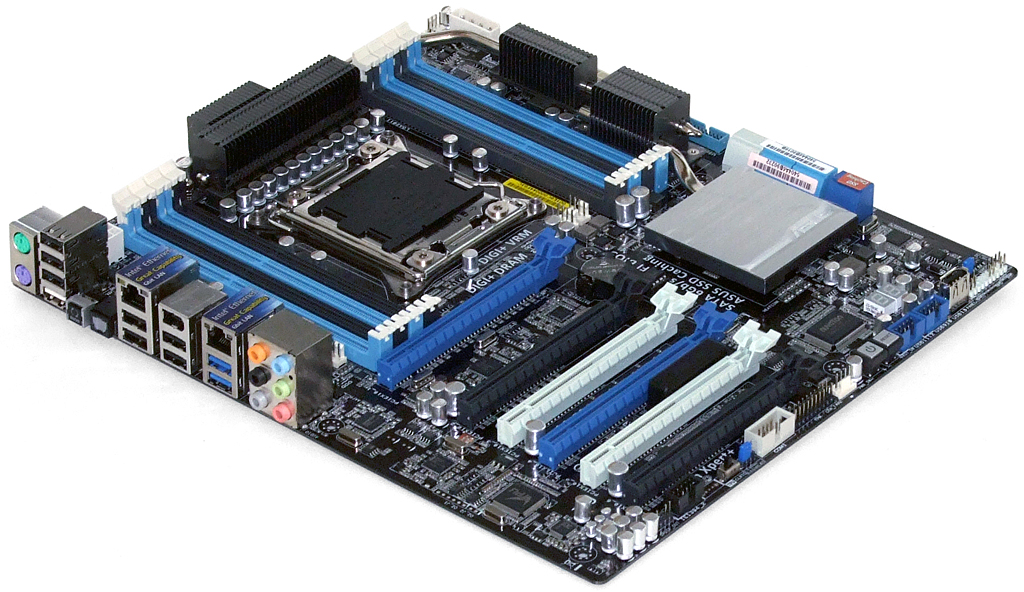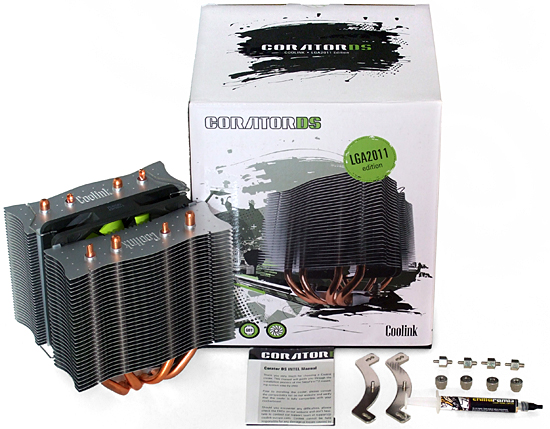Five More Mainstream Gaming Cases, Rounded-Up
We've already given you a pictorial walk-through of cases six through 10 of our 15-chassis round-up. Today, we build PCs inside of them, evaluate their value, and pick one as the most likely to satisfy your needs (though several excel in other ways).
Test Setup And Benchmarks
| Test System Configuration | |
|---|---|
| CPU | Intel Core i7-3960X (Sandy Bridge-E): 3.30 GHz, Six Cores O/C to 4.25 GHz (34 x 125 MHz) at 1.40 V Core |
| CPU Cooler | Coolink Corator DS 120 mm Tower |
| Motherboard | Asus P9X79 WS: LGA 2011, Intel X79 Express, Firmware 0603 (11-11-2011) O/C at 125 MHz BCLK |
| RAM | G.Skill F3-17600CL9Q-16GBXLD 16 GB (4 x 4 GB) DDR3-2200 Benchmarked at DDR3-1600 CAS 9 defaults |
| Graphics | Nvidia GeForce GTX 580: 772 MHz GPU, GDDR5-4008 Maximum Fan Speed for Thermal Tests, SLI |
| Hard Drives | Samsung 470 Series MZ5PA256HMDR, 256 GB SSD |
| Sound | Integrated HD Audio |
| Network | Integrated Gigabit Networking |
| Power | Seasonic X760 SS-760KM ATX12V v2.3, EPS12V, 80 PLUS Gold |
| Software | |
| OS | Microsoft Windows 7 Ultimate x64 |
| Graphics | Nvidia GeForce 296.10 WHQL |
| Chipset | Intel INF 9.2.3.1020 |
We reused the test platform from Four ATX Cases For High-Capacity Water Cooling, Reviewed, but at an overclocked setting that’s more appropriate for air cooling. It includes Asus’ P9X79 WS and a sacrificial C0-stepping Core i7-3960X.
While we normally choose a cooler for its low noise and high cooling, Coolink’s Corator DS provides the moderately-low temperatures and moderately-high noise needed to properly evaluate the airflow and noise-dampening capabilities of these cases.
| Benchmark Configuration | |
|---|---|
| Prime95 v25.8 | 64-bit executable, Small FFTs, 11 Threads |
| 3DMark 11 | Version: 1.0.1.0, Extreme Preset: Graphics Test 1, Looped |
| RealTemp 3.40 | Average of maximum core readings at full CPU load |
| Galaxy CM-140 SPL Meter | Tested at 1/2 m, corrected to 1 m (-6 dB), A-Weighting |
Get Tom's Hardware's best news and in-depth reviews, straight to your inbox.
Current page: Test Setup And Benchmarks
Prev Page Building With The SilverStone Kublai KL04 Next Page Temperature, Noise, And Acoustic Efficiency-
samorf That's a great looking case. I know value isn't a huge point for the CM Cosmos 2 but I would love to see your benchmarks on it.Reply -
mjmjpfaff I really thought that the Antec Eleven Hundred would get this site's nod, especially with its build quality and its plethora of features to help with cable management, as well as all of its removable dust filters which many cases at the 100$ mark lack as well as some cases well over 100$.Reply -
jimmysmitty mjmjpfaffI really thought that the Antec Eleven Hundred would get this site's nod, especially with its build quality and its plethora of features to help with cable management, as well as all of its removable dust filters which many cases at the 100$ mark lack as well as some cases well over 100$.Reply
Antec, I think, has fallen behind in case design as of late. While the Eleven Hundred is much better than the aging 900/300 design, it still has some small points of meh such as only one 2.5" drive bay when there are other cases close to the price (not current price but original price) trat support 2.5" in every drive bay.
Also the design is a bit meh. Though I have fallen in love with the Corsair 500R so its a bit hard to make me think of another case. And the CM Storm Enforcer is ok. Had one in the shop the other day. Nothing amazing honestly but its not overly bad. -
Crashman jimmysmittyAntec, I think, has fallen behind in case design as of late. While the Eleven Hundred is much better than the aging 900/300 design, it still has some small points of meh such as only one 2.5" drive bay when there are other cases close to the price (not current price but original price) trat support 2.5" in every drive bay.Also the design is a bit meh. Though I have fallen in love with the Corsair 500R so its a bit hard to make me think of another case. And the CM Storm Enforcer is ok. Had one in the shop the other day. Nothing amazing honestly but its not overly bad.I really liked the Eleven Hundred, it's just that the Enforcer's super-low price makes it a better value for the majority of builds.Reply
-
damric I really felt like I was reading a commercial. Was this review cut and paste from the marketing documents provided?Reply -
Crashman damricI really felt like I was reading a commercial. Was this review cut and paste from the marketing documents provided?I'll have what you're having! Then I can look past all the careful observations, performance data and criticisms and see a world made of cotton candy!Reply
BTW, you should at least read the ENTIRE conclusion before calling an article a fluff piece. Thanks! -
randomkid ^No editing feature while in the Article comment mode. But I found out that once in the forum, it can be edited or deleted just like any post.Reply
-
jaquith I tend NOT to recommend cases to folks (personal preference) - it's like saying your Girlfriend is ugly or has a flaw.Reply
Beauty is in the eye of the beholder.
As long as the case functions and has what you need -- it's all what YOU like and flips that switch. -
eddieroolz I'm not a fan of obviously gamer looking cases, but the Antec 1100, by virtue of being so similar to my P280, gets my vote.Reply


